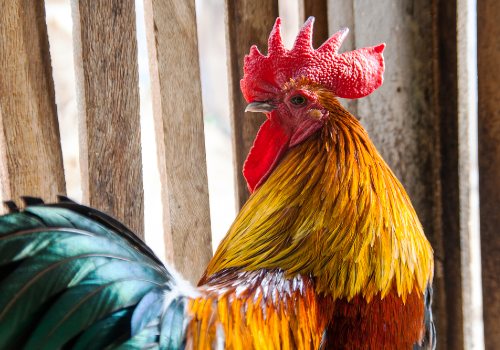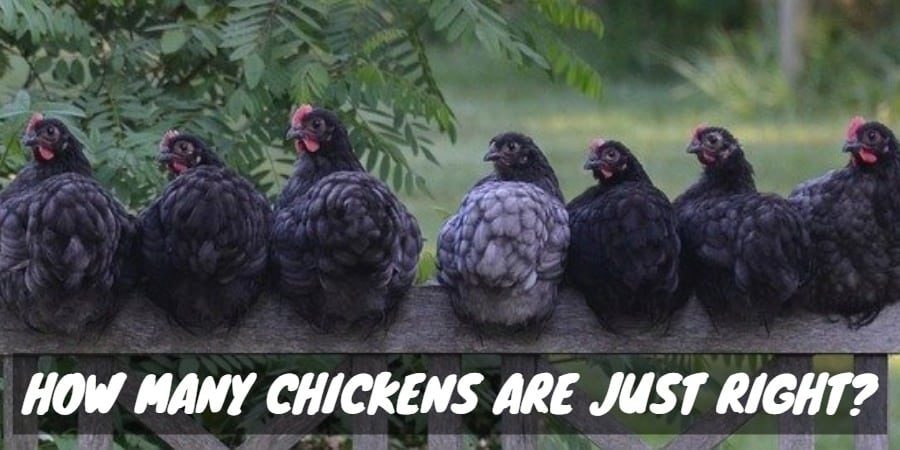Chickens, like many animals, are often taken for granted as simple creatures. They cluck, crow, lay eggs and peck at the ground — and, to many people, that’s all they do.
But as these chicken facts will show you, those people couldn’t be more wrong.
The truth is that there’s so much more to chickens than meets the eye. Common knowledge barely scratches the surface — get ready to have your mind blown!
Chicken Population and Farming Facts
1. There Are Over 23 Billion Chickens on Earth…
The human population reached 7.8 billion in 2020, but even that enormous figure seems tiny compared to the chicken population.
In 2018, the number of chickens around the world reached a staggering 23.7 billion — an increase of around 130% since 1990.
That’s a ratio of approximately 4 chickens for every person!
And that number doesn’t include wild chickens, pet chickens or chickens from farms that weren’t surveyed. The actual figure is likely much, much higher.
This makes chickens the bird with the single highest population on the planet.
2. …And They Produce Hundreds of Billions of Eggs a Year

Those billions of chickens produce hundreds of billions of eggs every year.
China leads the world in egg production with 458 billion eggs produced in 2018. The US trails behind in a distant second place with 109 billion eggs.
3. The Average Egg-Laying Farm Hen Produces 294 Eggs a Year
There are 340 million commercial egg-laying hens in the US, each one producing 294 eggs a year on average.
And since per-capita egg consumption in the US is around 290 eggs, that evens out to one hen per American.
Chicken Biology and Behavior Facts
4. A Chicken’s Heart Beats Up to 360 Times a Minute
The human heart beats, on average, between 60 and 100 times per minute.
But a chicken’s heart beats three times as fast: anywhere from 220 to 360 beats per minute.
Smaller hearts need to pump more often to keep up with the body’s blood demands, so that high rate makes sense. But it’s still quite shocking — most human hearts can’t beat that fast, and when they do, it’s considered a serious medical emergency.
5. Chickens Can Fly Around 10 Feet Off the Ground
Common knowledge goes that chickens can’t fly, but that’s not strictly true.
Chickens are too bulky to fly the way most other birds can, but they can still get around 10 feet of lift and can travel distances of up to 50 feet.
It’s not much, but it’s enough to get them onto roofs, tree branches and other safe, elevated roosting spots.
6. Chickens Can Recognize People — And Identify Attractive Ones

Chickens are capable of recognizing between 30 and 100 other individuals, both avian and human.
They can distinguish between you, your family members and the other chickens in their flock with ease — and they’re judging your beauty the whole time.
One study showed that chickens prefer people with symmetrical faces to people with asymmetrical faces. Humans show the same preference, judging those with symmetrical faces to be more attractive.
7. Chickens Have Just a Few Hundred Taste Buds
For a long time, scientists thought that chickens didn’t have taste buds.
That was later found to be untrue, but just barely: on average, chickens have 240 to 360 taste buds. That’s virtually nothing compared to humans, who have around 10,000 taste buds.
Chickens can’t taste sweetness, but they can taste saltiness — something to keep in mind next time you’re looking to give your flock a treat.
8. Chickens Are the Closest Living Relatives of the T. Rex
It’s tough to imagine that a monstrous T. rex could have anything in common with a mild-mannered chicken, but in evolutionary terms, they’re not so far apart.
Scientists compared T. rex collagen with that of many different modern animals. The results showed that the two most similar genomes belonged to the chicken and the ostrich.
Chickens even beat out reptiles like the alligator, which many people think of as being the closest modern equivalent to the T. rex. It seems that if Jurassic Park ever becomes a reality, it’ll all start with a chicken.
Amazing Chickens from Around the World

8. The World’s Oldest Chicken Lived to Be 16 Years Old
Matilda was a pet chicken from Alabama who holds the world record for longest-lived chicken: 16 years at her time of death in 2006.
Her vet attributed her longevity to the fact that she was infertile and never laid any eggs. Without laying taking a toll on her body, she far surpassed the typical maximum chicken lifespan of 10 years.
Matilda lived an illustrious life for any animal, much less a chicken. She performed in a magic show for a living, appeared at charity events and spent her free time relaxing with her owners in their house.
9. The Ayam Cemani Is a Rare Breed of Chicken that’s Entirely Black
The Ayam Cemani is highly sought after by chicken enthusiasts for its striking black color. Its feathers, skin, combs, beak and tongue are all black.
But this breed’s unique coloration doesn’t stop there. The bones, meat and internal organs are also entirely black — the only thing that isn’t is the blood, which is the expected shade of red.
Highly valued and respected in their native Indonesia, Ayam Cemanis are now available around the world. But they’ll cost you a pretty penny: $2,500 a chicken.
10. The World’s Largest Chicken Is as Tall as a 5 Year Old Child
The Brahma is one of the largest chicken breeds, but one Brahma in particular towers over the rest.
Meralki stands at 3 feet tall and weighs 17 pounds. He lives on a farm in Kosovo but became famous around the world when a video of him in his pen went viral in 2017.
Fitim Sejfijaj, Meralki’s owner, describes him as a loving and happy chicken who enjoys the company of two (regular-sized) hens in his enclosure.




